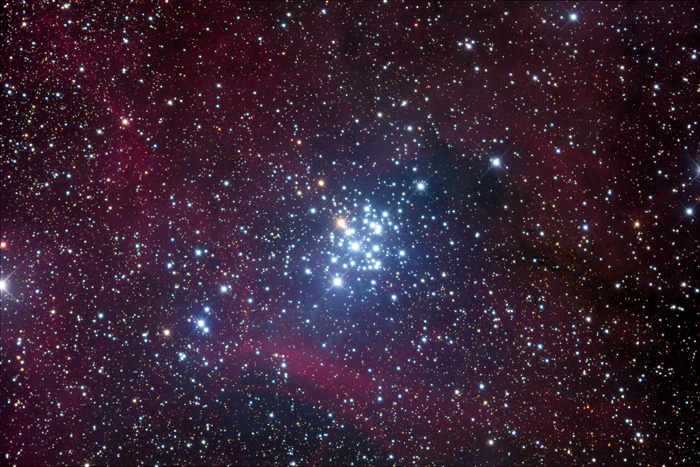This coming week will bring with it the announcements of the winners of this year's Nobel Prizes, with the physics prize due to be announced on Tuesday.
There has been considerable talk about the Nobel Prize in Physics this year, thanks in part to the announcements coming from the
BICEP2 team who claimed to have discovered the tell-tale signature of gravitational waves emitted during an important phase of the early Universe known as
inflation. That result has since been questioned by measurements from the
PLANCK telescope, so there is unlikely to be a Nobel Prize in the offing for the BICEP2 team this year.
So that leaves the question, who will win the Nobel Prize in Physics this year? There are many strong candidates, and I can't list them all here, but I'd like to mention one strong candidate who I think is very deserving, Vera Rubin.
 |
| Vera Rubin (Credit: UC Berkeley) |
Vera Rubin was responsible for a number of pioneering observations in the 1960s and 70s that laid down the case for spiral galaxies containing a large mass of undetected matter. The presence of this
dark matter was inferred from the rates at which these galaxies were seen to be rotating, which Vera Rubin calculated by measuring the speeds that the stars in the galaxies were moving (using the method I described in a
previous post).
Rubin found that the stars at the edges of the galaxies were moving a lot faster than expected if these stars were gravitationally bound to the galaxy, based upon estimates of the mass of the galaxy from counting up all the visible matter (stars, nebulae, and the like). Rubin didn't just find this in one galaxy, but multiple galaxies, leading up to her seminal
1980 paper which presented results for 21 galaxies, all displaying the same pattern of missing mass.
 |
Galaxy rotation curves: predicted (A) versus observed (B).
For the velocities in (B) to be so much higher than predicted (A) at large distances,
requires a considerable amount of 'missing mass'. (Credit: Penn State University) |
Since these pivotal observations there have been two prominent theories to explain these observations (and hundreds more observations since). The first is that the laws of physics (particularly the law of gravity) may somehow be different in these galaxies, which is often referred to as
Modified Newtonian Dynamics (MOND). The more popular explanation among astronomers though, is that these galaxies (and our own) contain a large amount of mass that doesn't emit any light, known as
dark matter.
Vera Rubin's pioneering work effectively laid down the observational basis for the existence of dark matter. There had been hints of the existence of such matter previously. Both Jan Oort in 1932, Fritz Zwicky in 1933, and Horace Babcock in 1939 had uncovered similar effects, but there were other explanations at the time that meant the results were never conclusive. Rubin's work was both thorough and conclusive, and has certainly stood the test of time.
In fact the evidence for dark matter has improved since that day to the point that the vast majority of astronomers consider it almost a fundamental truth that the majority of the mass in the Universe is in some dark form that we cannot directly observe. There is evidence from studies of hot gas in galaxy clusters, gravitational lensing of background galaxies by foreground dark matter condensations, and even from the cosmic microwave background radiation.
 |
The Bullet Cluster of galaxies. Blue show the distribution of dark matter,
red shows the distribution of 'normal' matter (Credit: NASA). |
Perhaps the most direct evidence to date for dark matter comes from observations of the Bullet Cluster of galaxies that shows dark matter and normal
baryonic matter spatially separated because of a collision between galaxies. Because the dark matter in the Bullet Cluster is not co-spatial with the distribution of normal matter, these observations cannot be explained by modified theories of gravity.
And now to add to all of this there were hints this year that astronomers might have actually made a
direct detection of dark matter!
So with all of this evidence I think Vera Rubin would be highly deserving of a Nobel Prize. Dark matter is
the most important astronomical discovery of the last half century, and although we don't fully know what it is made of, we know it exists!
Awarding Vera Rubin a Nobel Prize would also provide an excellent role model for women in all areas of physics. In over a century there have only been two female recipients of the Nobel Prize in Physics, Marie Curie and Maria Goeppert-Mayer, meaning that they are outnumbered 100-1 by male recipients. Adding Vera Rubin to that list would help to reduce that discrepancy, as well as recognising her important work.
















